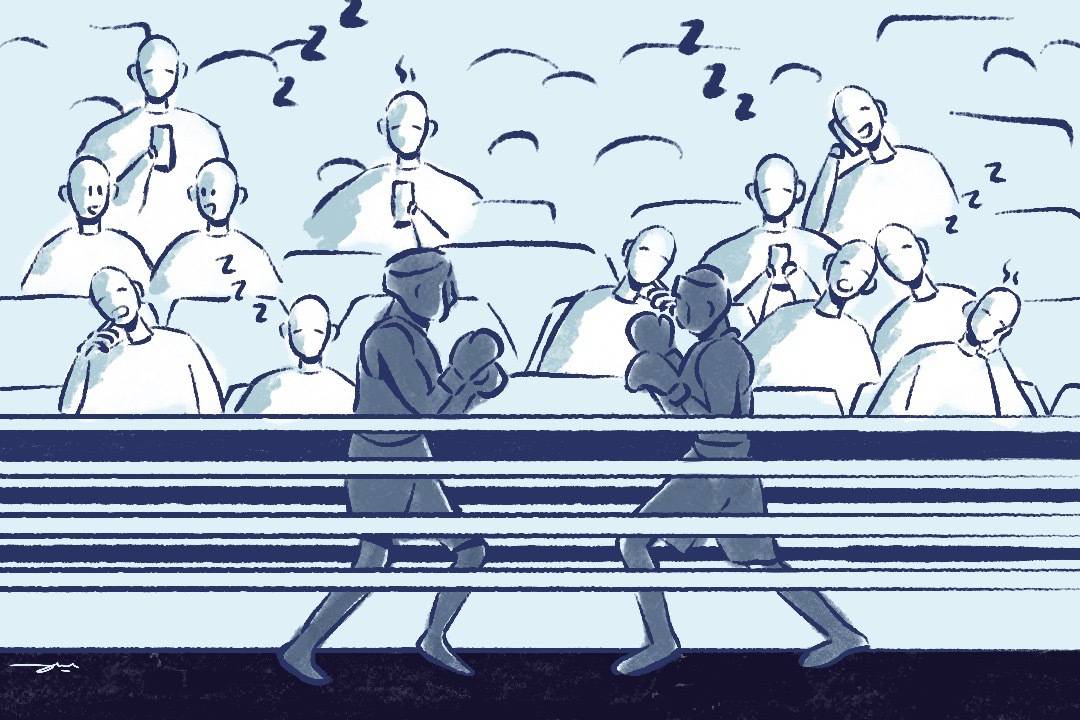On October 14, 21,000 fans and supporters of internet mega-stars Logan Paul and Olajide ‘JJ’ Olatunji — professionally known as KSI — filled a packed Manchester Arena to witness six rounds of boxing. Millions worldwide purchased the match with pay-per-view (PPV) on platforms like DAZN, YouTube, and ESPN to see the two YouTube personalities square up against mixed martial artist Dillon Danis and professional boxer Tommy Fury. Overall, the event’s card — dubbed the “Prime Card” — also included multiple other influencers who were set to fight each other.
With Fury already posting an impressive 10-0 professional record with four knockouts, the general public assumed that at the very minimum, there would be one fighter on the Prime Card who would demonstrate a glimpse of boxing skill. As for the Paul-Danis fight, neither was expected to display a newfound talent for the sport, as Paul’s skillset aligns more with wrestling and Danis’ with jiu-jitsu.
Ultimately, many viewers walked away severely underwhelmed. Mid-fight, Danis attempted to put Paul into an MMA-style chokehold, an illegal move that got him disqualified and helped serve as an unfortunate paradigm of what influencer boxing cards have come to.
Influencer boxing has cemented itself as a significant part of the boxing scene. Many credit the YouTube personalities Theo Baker and Joe Weller for introducing the celebrity boxing era, with the two British content creators uploading a video of them fighting in an amateur bout in 2017. This resulted in KSI accepting a challenge from the winner of the fight, Weller. Though unconventional, the internet sensations promoted their fight through what they were most familiar with: social media and YouTube videos.
After KSI won, he challenged other social media personalities — this time, Ohio natives and brothers Jake and Logan Paul. KSI challenging arguably one of the biggest American YouTube personalities at the time, Logan Paul, created a unique marketing opportunity by pitting the US against the UK.
Influencers’ fights began garnering more attention than most professional-level fights, as evidenced by the 1.3 million PPV purchases in the first fight between Paul and KSI. By using social media platforms to constantly promote “beef” between the fighters, these YouTubers, who already shared tens of millions of followers between them, saw their following climb to unforeseen levels. A new era of boxing had officially started, but was it here to stay?
When looking at just the numbers of the recent Prime Card, it’s difficult not to admire the amount of success the event garnered. From PPV sales alone, revenue for the event is estimated to be around $32 million. This figure excludes other major revenue streams, such as merchandise, ticket sales, and various advertising deals. On the surface, people would infer that the two headlining fights were must-see TV, similar to Floyd Mayweather and Manny Pacquiao’s bouts over the past two decades. Yet, the event was just the opposite: an ugly mix of poor technical skill, controversial judges, and even a brawl between security guards and the fighters themselves.
It existed as a harsh reminder that watchers were ultimately consuming a giant marketing scheme, consisting of outlandish hostility and product promotions instead of good, old-fashioned boxing. However, if history repeats itself, the next event that influencers headline will garner even more attention and money.
The rising success of influencer boxing has led other celebrities in other industries to try and become part of the scene. Some names include NBA star Nate Robinson, hip-hop artist Blueface, and even Mayweather, who toyed with Logan Paul in their 2021 bout. With UFC legend Conor McGregor making announcements that he wants to box KSI as well, it’s safe to assume that this influencer boxing era wasn’t merely a trend. It’s officially merged into the heart of the sport of boxing, and could be here for a long time to come.



No comments to display.